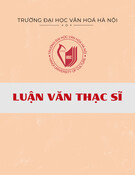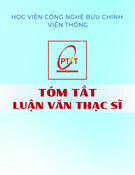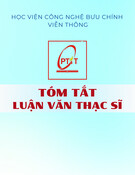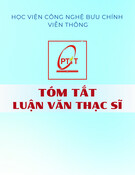
Annals of Mathematics
On a class of type II1
factors with Betti
numbers invariants
By Sorin Popa

Annals of Mathematics,163 (2006), 809–899
On a class of type II1factors
with Betti numbers invariants
By Sorin Popa*
Abstract
We prove that a type II1factor Mcan have at most one Cartan subalgebra
Asatisfying a combination of rigidity and compact approximation properties.
We use this result to show that within the class HT of factors Mhaving such
Cartan subalgebras A⊂M, the Betti numbers of the standard equivalence
relation associated with A⊂M([G2]), are in fact isomorphism invariants for
the factors M,βHT
n(M),n ≥0. The class HT is closed under amplifications
and tensor products, with the Betti numbers satisfying βHT
n(Mt)=βHT
n(M)/t,
∀t>0, and a K¨unneth type formula. An example of a factor in the class HT
is given by the group von Neumann factor M=L(Z2⋊SL(2,Z)), for which
βHT
1(M)=β1(SL(2,Z))=1/12. Thus, Mt≃ M,∀t= 1, showing that the
fundamental group of Mis trivial. This solves a long standing problem of
R. V. Kadison. Also, our results bring some insight into a recent problem of
A. Connes and answer a number of open questions on von Neumann algebras.
Contents
0. Introduction
1. Preliminaries
1.1. Pointed correspondences
1.2. Completely positive maps as Hilbert space operators
1.3. The basic construction and its compact ideal space
1.4. Discrete embeddings and bimodule decomposition
2. Relative Property H: Definition and examples
3. More on property H
4. Rigid embeddings: Definitions and properties
5. More on rigid embeddings
6. HT subalgebras and the class HT
7. Subfactors of an HT factor
8. Betti numbers for HT factors
Appendix: Some conjugacy results
*Supported in part by a NSF Grant 0100883.

810 SORIN POPA
0. Introduction
We consider in this paper the class of type II1factors with maximal abelian
∗-subalgebras satisfying both a weak rigidity property, in the spirit of Kazhdan,
Margulis ([Ka], [Ma]) and Connes-Jones ([CJ]), and a weak amenability prop-
erty, in the spirit of Haagerup’s compact approximation property ([H]). Our
main result shows that a type II1factor Mcan have at most one such maximal
abelian ∗-subalgebra A⊂M, up to unitary conjugacy. Moreover, we prove that
if A⊂Msatisfies these conditions then Ais automatically a Cartan subalgebra
of M, i.e., the normalizer of Ain N,N(A)={u∈M|uu∗=1, uAu∗=A},
generates all the von Neumann algebra M. In particular, N(A) implements
an ergodic measure-preserving equivalence relation on the standard probability
space (X, µ), with A=L∞(X, µ) ([FM]), which up to orbit equivalence only
depends on the isomorphism class of M.
We call HT the Cartan subalgebras satisfying the combination of the
rigidity and compact approximation properties and denote by HT the class
of factors having HT Cartan subalgebras. Thus, our theorem implies that if
M∈HT, then there exists a unique (up to isomorphism) ergodic measure-
preserving equivalence relation RHT
Mon (X, µ) associated with it, implemented
by the HT Cartan subalgebra of M. In particular, any invariant for RHT
Mis an
invariant for M∈HT.
In a recent paper ([G2]), D. Gaboriau introduced a notion of ℓ2-Betti
numbers for arbitrary countable measure-preserving equivalence relations R,
{βn(R)}n≥0, starting from ideas of Atiyah ([A]) and Connes ([C4]), and gen-
eralizing the notion of L2-Betti numbers for measurable foliations defined in
[C4]. His notion also generalizes the ℓ2-Betti numbers for discrete groups Γ0
of Cheeger-Gromov ([ChGr]), {βn(Γ0)}n≥0, as Gaboriau shows that βn(Γ0)=
βn(RΓ0), for any countable equivalence relation RΓ0implemented by a free,
ergodic, measure-preserving action of the group Γ0on a standard probability
space (X, µ) ([G2]).
We define in this paper the Betti numbers {βHT
n(M)}n≥0of a factor Min
the class HT as the ℓ2-Betti numbers ([G2]) of the corresponding equivalence
relation RHT
M,{βn(RHT
M)}n.
Due to the uniqueness of the HT Cartan subalgebra, the general properties
of the Betti numbers for countable equivalence relations proved in [G2] entail
similar properties for the Betti numbers of the factors in the class HT .For
instance, after proving that HT is closed under amplifications by arbitrary
t>0, we use the formula βn(Rt)=βn(R)/t in [G2] to deduce that βHT
n(Mt)=
βHT
n(M)/t, ∀n. Also, we prove that HT is closed under tensor products and
that a K¨unneth type formula holds for βHT
n(M1⊗M2) in terms of the Betti
numbers for M1,M
2∈HT, as a consequence of the similar formula for groups
and equivalence relations ([B], [ChGr], [Lu], [G2]).

BETTI NUMBERS INVARIANTS 811
Our main example of a factor in the class HT is the group von Neumann
algebra L(G0) associated with G0=Z2⋊SL(2,Z), regarded as the group-
measure space construction L∞(T2,µ)=A0⊂A0⋊σ0SL(2,Z), where T2is
regarded as the dual of Z2and σ0is the action implemented by SL(2,Z)onit.
More generally, since our HT condition on the Cartan subalgebra Arequires
only part of Ato be rigid in M, we show that any crossed product factor of
the form A⋊σSL(2,Z), with A=A0⊗A1,σ=σ0⊗σ1and σ1an arbitrary
ergodic action of SL(2,Z) on an abelian algebra A1, is in the class HT .Bya
recent result in [Hj], based on the notion and results on tree-ability in [G1], all
these factors are in fact amplifications of group-measure space factors of the
form L∞(X, µ)⋊F
n, where Fnis the free group on ngenerators, n=2,3,... .
To prove that Mbelongs to the class HT , with Aits corresponding HT
Cartan subalgebra, we use the Kazhdan-Margulis rigidity of the inclusion Z2⊂
Z2⋊SL(2,Z) ([Ka], [Ma]) and Haagerup’s compact approximation property
of SL(2,Z) ([Ha]). The same arguments are actually used to show that if
α∈C,|α|=1,and Lα(Z2) denotes the corresponding “twisted” group algebra
(or “quantized” 2-dimensional thorus), then Mα=Lα(Z2)⋊SL(2,Z)isinthe
class HT if and only if αis a root of unity.
Since the orbit equivalence relation RHT
Mimplemented by SL(2,Z)onA
has exactly one nonzero Betti number, namely β1(RHT
M)=β1(SL(2,Z)) = 1/12
([B], [ChGr], [G2]), it follows that the factors M=A⋊σSL(2,Z) satisfy
βHT
1(M)=1/12 and βHT
n(M)=0,∀n= 1. More generally, if αis an nth
primitive root of 1, then the factors Mα=Lα(Z2)⋊SL(2,Z) satisfy βHT
1(Mα)=
n/12,βHT
k(Mα)=0,∀k= 1. We deduce from this that if α, α′are primitive
roots of unity of order nrespectively n′then Mα≃Mα′if and only if n=n′.
Other examples of factors in the class HT are obtained by taking discrete
groups Γ0that can be embedded as arithmetic lattices in SU(n, 1) or SO(m, 1),
together with suitable actions σof Γ0on abelian von Neumann algebras A≃
L(ZN). Indeed, these groups Γ0have the Haagerup approximation property
by [dCaH], [CowH] and their action σon Acan be taken to be rigid by a recent
result of Valette ([Va]). In each of these cases, the Betti numbers have been
calculated in [B]. Yet another example is offered by the action of SL(2,Q)on
Q2: Indeed, the rigidity of the action of SL(2,Z) (regarded as a subgroup of
SL(2,Q)) on Z2(regarded as a subgroup of Q2), as well as the property H of
SL(2,Q) proved in [CCJJV], are enough to insure that L(Q2⋊SL(2,Q)) is in
the class HT .
As a consequence of these considerations, we are able to answer a number
of open questions in the theory of type II1factors. Thus, the factors M=
A⋊σSL(2,Z) (more generally, A⋊σΓ0with Γ0,σ as above) provide the first
class of type II1factors with trivial fundamental group, i.e.
F
(M)def
={t>0|Mt≃M}={1}.

812 SORIN POPA
Indeed, we mentioned that βHT
n(Mt)=βHT
n(M)/t, ∀n, so that if βHT
n(M)=0
or ∞for some nthen
F
(M) is forced to be equal to {1}.
In particular, the factors Mare not isomorphic to the algebra of nby n
matrices over M, for any n≥2, thus providing an answer to Kadison’s Problem
3 in [K1] (see also Sakai’s Problem 4.4.38 in [S]). Also, through appropriate
choice of actions of the form σ=σ0⊗σ1, we obtain factors of the form
M=A⋊σSL(2,Z) having the property Γ of Murray and von Neumann, yet
trivial fundamental group.
The fundamental group
F
(M)ofaII
1factor Mwas defined by Murray
and von Neumann in the early 40’s, in connection with their notion of contin-
uous dimension. They noticed that
F
(M)=R∗
+when Mis isomorphic to the
hyperfinite type II1factor R, and more generally when M“splits off” R.
The first examples of type II1factors Mwith
F
(M)=R∗
+, and the first
occurrence of rigidity in the von Neumann algebra context, were discovered by
Connes in [C1]. He proved that if G0is an infinite conjugacy class discrete
group with the property (T) of Kazhdan then its group von Neumann algebra
M=L(G0)isatypeII
1factor with countable fundamental group. It was
then proved in [Po1] that this is still the case for factors Mwhich contain
some irreducible copy of such L(G0). It was also shown that there exist type
II1factors Mwith
F
(M) countable and containing any prescribed countable
set of numbers ([GoNe], [Po4]). However, the fundamental group
F
(M) could
never be computed exactly, in any of these examples.
In fact, more than proving that
F
(M)={1}for M=A⋊σSL(2,Z), the
calculation of the Betti numbers shows that Mt1⊗Mt2...⊗Mtnis isomorphic
to Ms1⊗Ms2...⊗Msmif and only if n=mand t1t2...t
n=s1s2...s
m.In
particular, all tensor powers of M,M⊗n,n =1,2,3,..., are mutually noni-
somorphic and have trivial fundamental group. (N.B. The first examples of
factors having nonisomorphic tensor powers were constructed in [C4]; another
class of examples was obtained in [CowH]). In fact, since βHT
k(M⊗n)= 0 if and
only if k=n, the factors {M⊗n}n≥1are not even stably isomorphic.
In particular, since Mt≃L∞(X, µ)⋊F
nfor t= (12(n−1))−1(cf. [Hj]),
it follows that for each n≥2 there exists a free ergodic action σnof Fnon the
standard probability space (X, µ) such that the factors Mn=L∞(X, µ)⋊σn
Fn,n =2,3,..., satisfy Mk1⊗···⊗Mkp≃Ml1⊗...⊗Mlrif and only if p=r
and k1k2...k
p=l1l2...l
r. Also, since βHT
1(Mn)= 0, the K¨unneth formula
shows that the factors Mnare prime within the class of type II1factors in HT .
Besides being closed under tensor products and amplifications, the class
HT is closed under finite index extensions/restrictions, i.e., if N⊂Mare type
II1factors with finite Jones index, [M:N]<∞, then M∈HT if and only if
N∈HT. In fact, factors in the class HT have a remarkably rigid “subfactor
picture”.








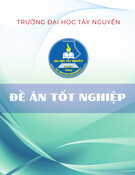





![Đề án Thạc sĩ: Tổ chức hoạt động văn hóa cho sinh viên Trường Cao đẳng Du lịch Hà Nội [Chuẩn nhất]](https://cdn.tailieu.vn/images/document/thumbnail/2025/20251202/kimphuong1001/135x160/91661764646353.jpg)


